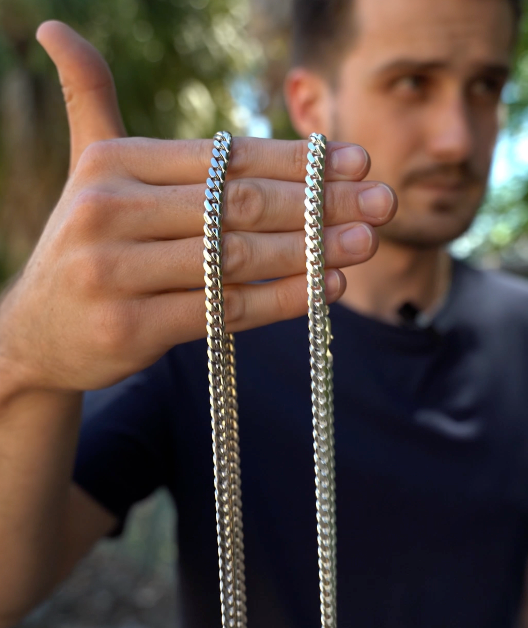925 Sterling Silver vs. 14kt White Gold: What's the Difference?
When it comes to choosing jewelry, two popular options are 925 sterling silver and 14kt white gold. Both materials have their unique characteristics, and understanding the differences can help you make the right choice for your next piece of jewelry. Let's explore the key differences between these two metals.
1. Price
One of the most significant differences between 925 sterling silver and 14kt white gold is the price. For example, a 7mm chain that weighs around 90 grams would cost you somewhere in the $500 range if it's made of sterling silver. The same chain in 14kt white gold would be around $4900. That's a substantial difference!
2. Appearance
Sterling silver is known for its bright and shiny appearance, especially when it's new. It has a lustrous finish that many people find appealing. White gold, on the other hand, has a more subtle shine and may not be as bright as silver (although it can be, particularly if rhodium plated).
3. Durability and Maintenance
Sterling silver is softer than 10kt or 14kt white gold, which means it may scratch a little more easily. It also tarnishes over time, meaning it can lose its shine and require a jewelers polish. White gold doesn't tarnish, but it can get dirty. Some at home solutions or ultrasonics will be able to take off that daily grit and grime from a white gold piece. A simple cleaning can restore its appearance.
4. Composition
925 sterling silver is made of 92.5% pure silver and 7.5% other metals, usually copper. This combination gives it strength while maintaining its beautiful shine. 14kt white gold is made of 58.3% pure gold and a mixture of other metals like , zinc, copper, and a little bit of silver. The addition of these metals gives white gold its unique color and strength.
5. Suitability
If you're looking for something affordable and bright, sterling silver might be the way to go. It's perfect for everyday wear and offers a dazzling appearance. If you're looking for something more durable and are willing to invest more, 14kt white gold could be the right choice. It's often used in engagement rings and other significant pieces of jewelry.
Conclusion
Both 925 sterling silver and 14kt white gold have their unique characteristics and appeal. Sterling silver is a more budget-friendly option with a bright shine but requires more maintenance. White gold is more expensive but offers durability and a sophisticated appearance.
When choosing between these two metals, consider your budget, preferences, and how you plan to wear the piece. Both options offer beauty and style for various occasions.
